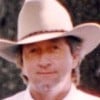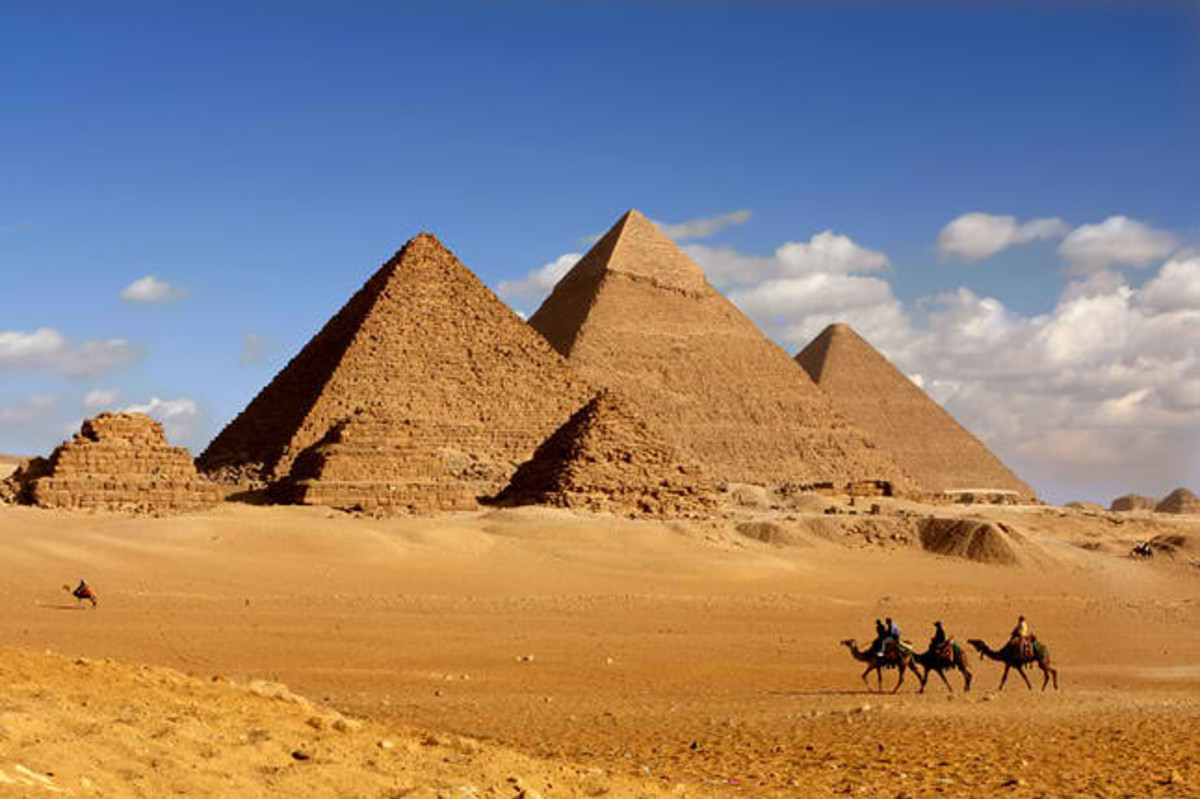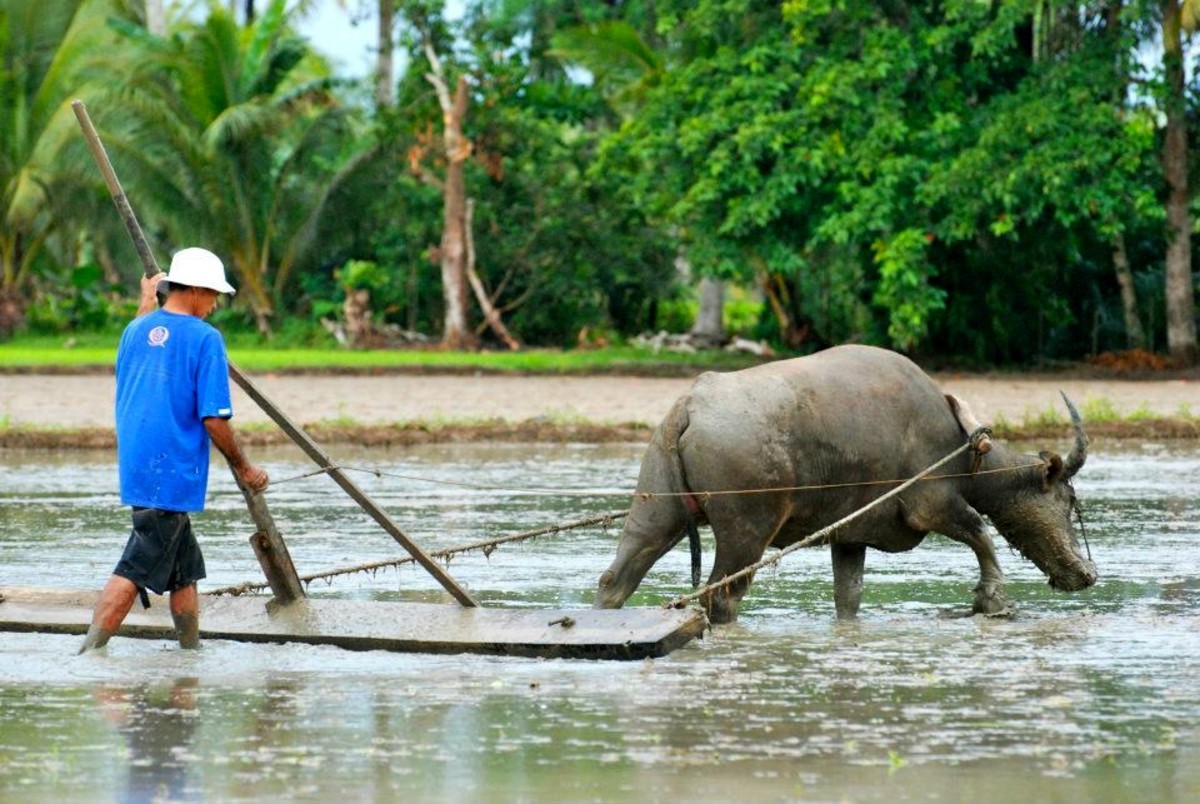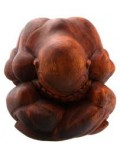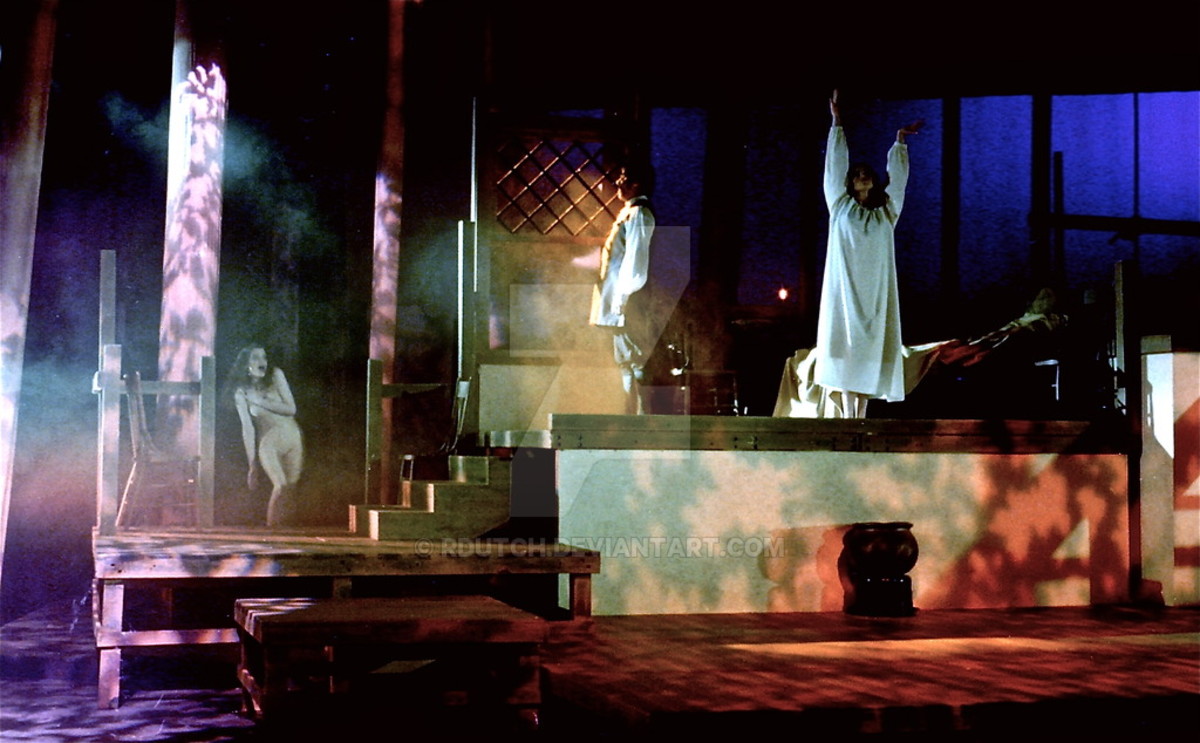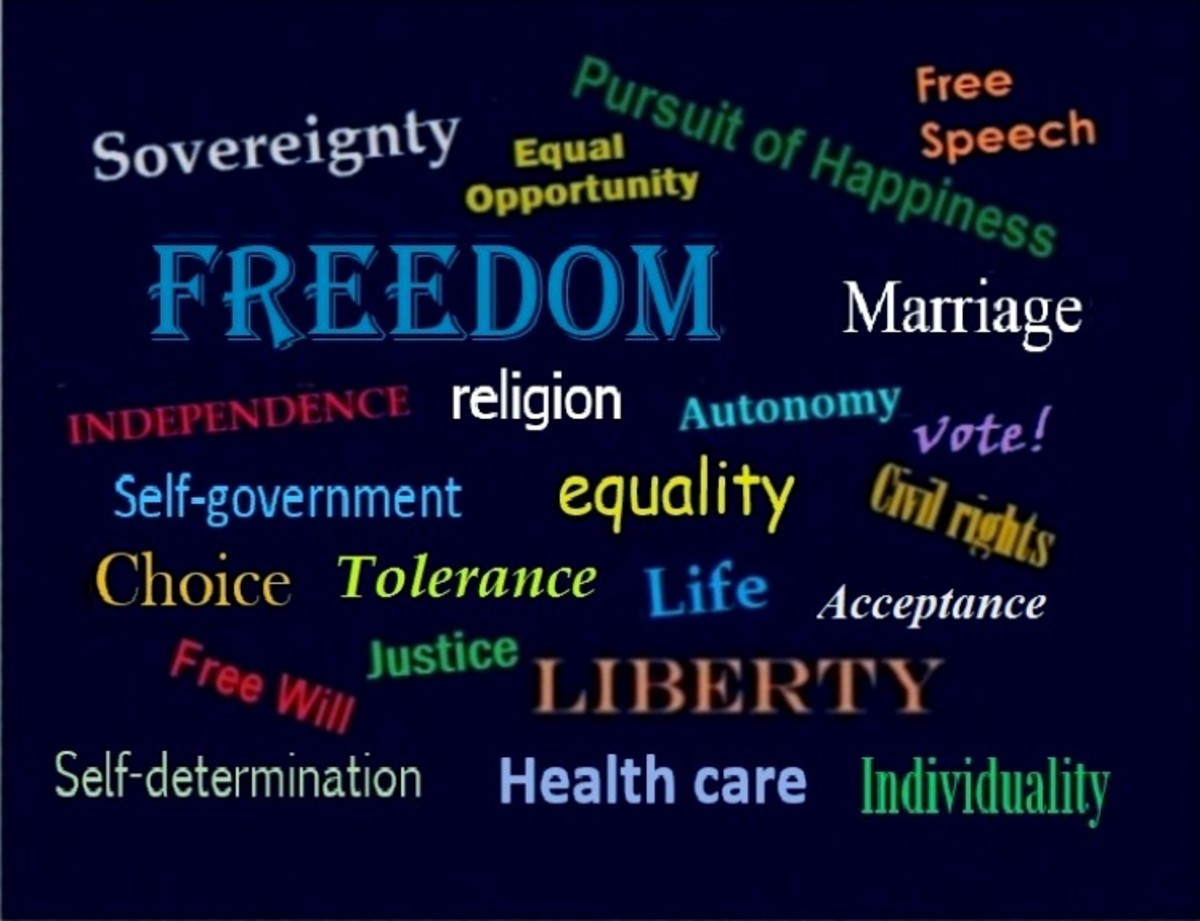My Democracy

By: Wayne Brown
Is ‘democracy’ in our genes? Is it a part of our DNA structure? Are we just born with a sense of it? I think there are many who would answer “yes” to those questions without pause. I gave it a lot of thought this week. The more I thought about it, the less I was prone to answer “yes” to any of them. Democracy is not a simple thing and for those who have never experienced it, the concept can be quite difficult to grasp.
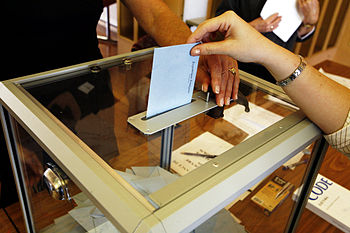
Let’s talk about ‘democracy’ not so much from the political standpoint or the interaction at the voting booth, but more so in the sense of liberty, freedom, rights, responsibilities, and opportunity. After all, these are the real benefits of the democratic process. The other aspects are more utilitarian to the process in the fact that we get to vote, majority rules, etc, etc. To say it in another way, one could spend all afternoon explaining the principles of baseball but nothing they could say can demonstrate to a young boy the exhilaration he will feel when he hits the ball for the first time, slides into a base, or scores the winning run. Those emotions come from the experience not the understanding.
I will share a visual with you that I experienced as a young Air Force flyer serving in Southeast Asia during the Vietnam Conflict. For a time, my operating base was in the Philippine Islands. Over the course of my service time there, I was involved in several discussions that circles around ‘why we were there.’ Often the general conclusion became that our presence was a mission to bring democracy to the people of Southeast Asia. That sounds noble enough and we all bought off on it. I did not think much about it until I witnessed something one day that caused me to look at all of it from a different perspective.
I had a friend who leased a house off the military base complex at Clark Air Force Base in the Philippines. It was a common practice at that time. The American dollar bought a lot of value in that part of the world so people could live in rather lavish surroundings for a small price. My friend invited me over one weekend just to chill out and relax. Across from this house my friend was living in was a small farm field probably one-half acre in size. The field was bordered on three sides by roads. On the north side, it was bordered by a concrete block fence that rose up about eight feet or so. This fence divided it from the adjoining property. Looking at the field, I noticed a lean-to type structure about one-third of the way down the fence line. It consisted of a slanted roof which rested on a series of upright posts planted into the ground near the fence. The roof extended upward at an angle until it joined the surface of the fence. Out in the field, I noticed a Filipino man wearing a straw hat plowing slowly along behind a water buffalo. Little did I know at the time but this man was about to teach me things about democracy.
Through the course of the day, I would glance up at the field and watch the man slowly but deliberately plowing each row of the field. By the end of the day, he had made significant progress but still would require part of another day of plowing to finish preparing the land prior to planting his crop. As he stopped plowing I noticed that he herded the water buffalo toward the lean-to structure. There was a bicycle tied up there to one of the posts. I just assumed the man would take the harness off of the buffalo, place him into the lean-to structure and ride off on his bicycle toward home to get a few hours of well-earned rest. That was the way it would have worked back home in America, why not here?
The man herded the buffalo into the west side of the lean-to. I then noticed the structure had a interior rail fence separating the structure into approximately half sections. The whole thing probably measured maybe eight to ten foot square so any way you figure it, either side was maybe 50 square feet of area at best. It then dawned on me. The water buffalo lived in one side and the man lived in the other. As I sat there gazing out at him, I realized that everything this man owned in the world was before my eyes and now rested in the confines of this lean-to space. Considering all the things I had back home, it was a pretty humbling moment and I immediately felt sorry for him and this existence. I was wrong about that too.
Watching the man and his water buffalo, I thought of their dependence on each other. The water buffalo needed the man to be there for him to provide shelter, food, water, and care. The buffalo justified his existence and his value by providing a service to the man. That service was of such value to the man that he was willing to split his meager home with the buffalo in order that he would be protected from the elements and able to serve the man for years to come. The man depended on the buffalo to help him till the soil and grow a crop. The man depended on the lean-to to shelter both of them and his only mode of transportation, an old bicycle, from the elements. There it was. All a man had to show for his life sitting in 100 square feet of lean-to area. It was humbling to watch.
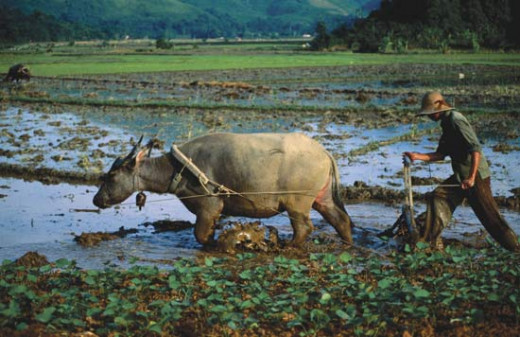
Years have now past and I have had time to mull over what I observed in that field. Thinking about it has changed my perspective and though I am still humbled, I am not so down-trodden to think of the plight of this person. You see, in this man’s mind, he had achieved some level of success and status in life. He owned a piece of land. He had a water buffalo to help cultivate it. He was sheltered from the elements and he had a mode of transportation that allowed him to venture out into the world for the things that he needed. From his perspective, he had a lot more than some people had. His crops would provide him with food and a source of income. Most importantly, he had the freedom to own these items, use them for his own gain, and dispose of what came of it in a manner that he saw fit. In every sense of the word, this man was living in a democracy as I was. The difference was that we were both experiencing different levels of it and thus the perspective was different.
FREEDOM!
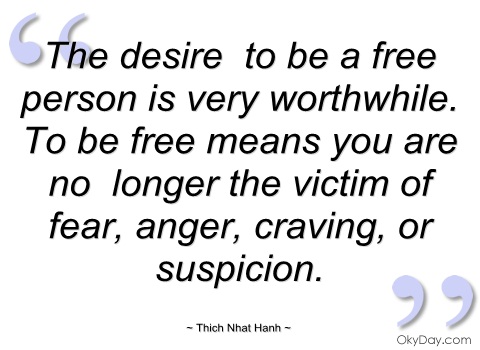
Many years ago, a man by the name of Maslow evolved a theory on needs and how it affects people and their behavior. The theory is referred to as Maslow’s Theory of the Hierarchy of Needs. The theory is best visualized as a pyramid, triangular structure on which the various needs of mankind are layered in terms of priority starting with the most basic at the bottom and culminating at the top with the most complex. This theory has been taught in management schools since its inception and it helps managers better evaluate those things which will best motivate their charges. At the base of this pyramid is the most basic need, that of survival. It encompasses such thing as food, water, shelter. At the top is the most complex: self-actualization. In between there is an evolution of steps between these two points. Once one determines where a person is on this pyramid then it becomes much clearer as to what actions or items will best motivate him.
The rationale of this theory works like this. A person who is on the lowest step and concerned for their basic survival will not be interested in or motivated by an action or item which offers nothing more than a sense of self-actualization or accomplishment when is totally concerned with his basic survival. Where is my next meal coming from? In turn, a person who is on the pinnacle of the pyramid is not motivated in the sense of self-actualization or accomplishment when he is offered a turkey sandwich. This theory is applicable to any person, any society, any situation for the most part. It was this theory that allowed me to put my experience in viewing this man into perspective.
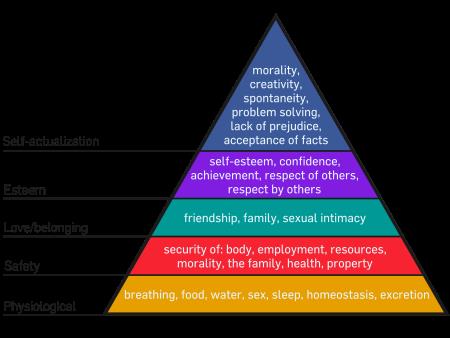
So where does all of that leave us with the concept of ‘democracy’. I would hope that it sheds a light on just how complex democracy can be. It is a concept that could be hauled out into a field in a dump truck and then picked up in a tea cup. It really depends on how simple or complex one chooses to make the model. As Americans, with a long history of experience in the concept of democracy, most of us have been blessed to have risen beyond the concern of just surviving. The people of this country, for the most part, rise relatively high into Maslow’s Hierarchy having more than just the basic needs for survival in life and retaining a sense of security. Certainly we still have, and always will, a portion that fight to rise above the level of basic survival. At the same time, we also have a significant portion of the population who, as a result of personal drive, education, hard work, and dedication, rise to the level of self-actualization and accomplishment. Suffice to say that a significant portion of the population has at least experience a brush with the lowest levels of the pyramid at some point in life.
As Americans, we see the value of democracy all around us. For the most part, I would venture to guess that few of us could place all our worldly possession in the confines of 100 square feet as I observed with the Filipino man. Likely few of us value our possessions as much as he did his own. Regardless, the point here is whether we are at the pinnacle of the needs pyramid or down at the bottom just surviving, those of us who live in a democracy see what we derive from it and in turn appreciate its value. For those who do not live in such a society, it is likely they will never rise above that bottom rung in the pyramid regardless of their effort. That will not happen until they are truly free and can exercise their personal liberty.
It has been many years since I watched the man plowing his water buffalo. It was a simple scene but one that I will never forget because it is forever burned in my head as the image of a sprouting democracy at the individual level. It reminds me to cherish the opportunity that I received at birth, to thank the Founding Fathers for their wisdom in making equality significant within the basic structure of our society and for making life, liberty, and the pursuit of happiness an inalienable right by birth into this great nation.
Democracy is not part of the human DNA. It is a rather complex concept and one that is quite difficult for the person who has no concept of it. When we extend our hand and help others to pursue it, we must remember that. We must teach it in a way it can be understood and valued. We must tie it to the one thing that all human beings do have embedded within them at birth…the desire to be free. Once they make that connection and realize that the two go hand in hand, then the roots of democracy will sprout and grow deep into their soul. At that point, you will witness what every person should realize in order to be an American.
© Copyright WBrown2010. All Rights Reserved
